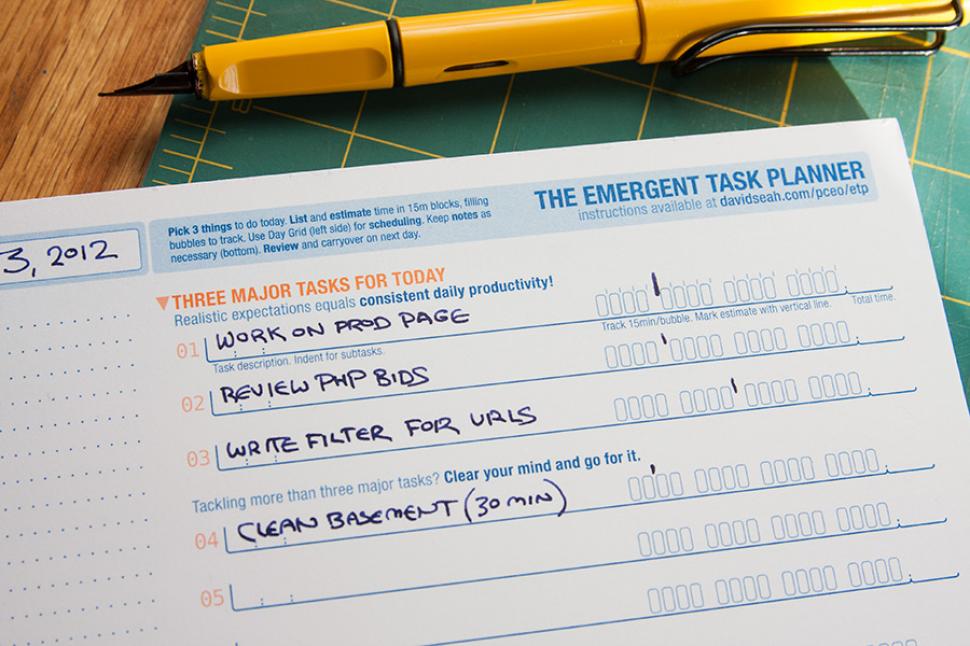Do you struggle with traditional to-do lists?
We recently stumbled upon some innovative (and free!) task management tools courtesy of designer David Seah. If the standard approach to daily to-do lists doesn’t work for you, you need to check these out.

Seah has refined his collection of goal-setting, list-making, and time-tracking tools to support his work as a self-employed designer and developer. While most of the free printables on his site can be applied to any situation, some — like the National Novel Writing Month word count calendar — are more specific.
Feeling hesitant to adopt yet another new system? Don’t worry, these tools require no startup investment. No book to read, no special file folders to buy.

“While the tools share similar principles and elements,” Seah writes on his site, “they were not made to be a single integrated system, or even used on a regular basis. Use them when you feel the need to feel more focused, to find out where your time is going, or to just get a different look on your work.” In other words, no pressure. Experiment, find out what works for you, and decide when and how often you use it.
So far, I’ve enjoyed using the Emergent Task Planner to tackle an especially overwhelming day. The Day Grid Balancer gave me lots of insights into my week: how much little stuff I actually got done, how well I balanced time spent on each area of responsibility, and, sadly, how little time I invested in my own happiness. When I went out of town for a few days, I left my husband a stack of Seah’s clever Task Order Ups.

My husband, meanwhile, employed the Emergent Task Timer to help him record and reflect on how long individual tasks took to complete. Time blind ADHD’ers, this one’s for you!
Seah intends to include stationary in his business model, and I’m excited to see where he takes it. So far his productivity tools are fun, clever, and useful. Because they’re free and printable from anywhere, it’s easy to choose when and how many to use without cluttering up your office or spending money on a new gimmick.
I have a well-established GTD-based system, and I was happy to find Seah’s tools won’t infringe upon or distract from an existing setup. Instead, they pinch-hit in a time of specific need, when your brain needs a little something extra to avoid complete overwhelm.
Take a look, try them out, and let me know what’s working for you!
Hey there! Are you enjoying The ADHD Homestead?
Here's the thing: I don't like ads. I don't want to sell your attention to an advertising service run by the world's biggest data mining company. I also value my integrity and my readers' trust above all, which means I accept very few sponsorships/partnerships.
So I'm asking for your support directly. For the cost of one cup of coffee, you can help keep this site unbiased and ad-free.
Below you will find two buttons. The first lets you join our crew of Patreon pals and pledge monthly support for my work. Patrons also have access to my Audioblogs podcast. The second takes you to a simple donation page to pledge one-time or recurring support for The ADHD Homestead, no frills, no strings. Do whichever feels best for you!

